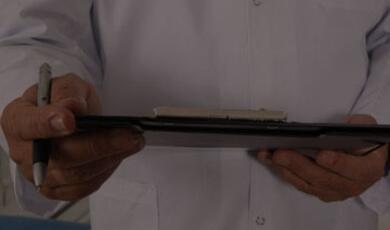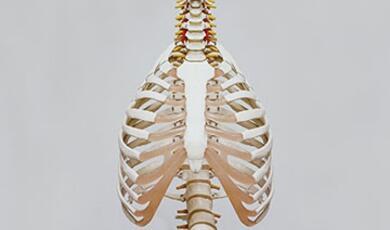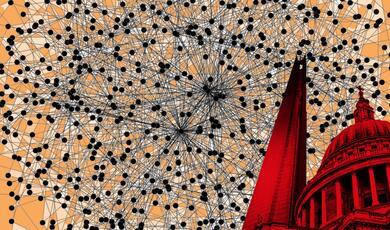A Microbial Future
Share
- Details
- Text
- Audio
- Downloads
- Extra Reading
Microbes have existed on Earth for almost 4 billion years; 3x as long as multicellular organisms and 1000x longer than humans. So what does the future hold? Will recent advances in genetic engineering enable us to create bacterial ‘drug-delivery’ machines or self-replicating microbial vaccines? What will the first human-created lifeform mean for our understanding of biology? Will humanity end with a ‘microbial bang’, or might microbes perhaps be the solution we need to spread our wings beyond this planet?
Download Text
A Microbial Future
Professor Robin May
10th May 2023
Microbes have existed on Earth for almost 4 billion years. They occupy every possible habitat, thrive under extreme conditions and perform acts of chemistry that exceed any human achievement. So with that track record, what might they have in store for us in the future?
Neils Bohr, the Nobel-winning physicist, famously quipped that “making predictions was difficult, especially about the future”. But with that caveat firmly in mind, in this lecture we will plunge into the world of informed speculation and investigate some of the exciting, radical and sometimes terrifying microbial events that the coming decades may bring.
Microbes for Health
We all know, only too well, that microbes are the cause of many of humanity’s greatest health problems. But microbes also hold the key to preventing many diseases. We have already been using microbes for hundreds of years as vaccines, for instance. Edward Jenner’s use of live cowpox viral material to inoculate James Phipps against smallpox in 1796 laid the foundations of a public health revolution that is still very much underway today. The vaccinations that most of us have received for measles, mumps, polio or tuberculosis all rely on the concept of injecting a weakened (‘attenuated’) strain of the disease-causing virus or bacterium. By deliberately exposing the body to an extremely mild version of the illness, the immune system is primed to resist subsequent exposure to the fully virulent form.
More recently, however, microbes have been harnessed for vaccination in an entirely different way. Since viruses, by definition, require a host cell for their lifecycle, most viruses are adept at entering host cells. Typically, they also have relatively simple genomes that can be readily modified by genetic techniques. Modification to prevent their ability to cause disease has enabled some viruses to be used as ‘Trojan Horses’ for vaccine delivery. Genes from other, disease-causing, pathogens can then be incorporated into these ‘viral vectors’, providing a flexible platform for vaccine delivery.
Many of us have benefited from exactly this approach in recent years, because this is precisely the technology used in the Oxford/AstraZeneca vaccine against SARS-CoV-2. This microbial approach to vaccination has potential applications that go far beyond Covid-19, however; indeed similar viral vector strategies are currently undergoing testing for major global diseases such as malaria and tuberculosis. If successfully established, then a major benefit of this ‘plug and play’ vaccine technology will be the speed at which it can be adapted; potentially allowing much more successful vaccination strategies against rapidly evolving diseases such as influenza or pneumococcal pneumonia. But what if it could be harnessed for even more radical healthcare solutions in the future?
One such concept is the ‘pre-emptive vaccine library’. When the immune system recognises a pathogen – or the vaccine that mimics it – what it actually responds to are small protein fragments derived from that pathogen: fragments of the ‘spike’ protein on the surface of SARS-CoV-2, for instance. The theoretical range of fragments that the body can respond to is vast; hundreds of trillions. However, the speed and scale of both DNA sequencing and synthesis makes it conceivable that future infectious vaccine development could respond within days to emerging threats. Imagine a scenario in which a patient in a hospital has their mystery illness identified by DNA sequencing (something that is becoming commonplace in infectious disease medicine). That sequence is automatically deposited into a global database, which immediately triggers automated DNA synthesis instruments to create unique matching sequences, generating viral vectors that are ready to go into clinical trials within days.
Self-spreading Vaccines
An even more radical prospect is that of ‘self-propagating’ vaccines. At present, viral vectors are deliberately disabled by their creators for safety reasons. They are capable of replication only within a specific laboratory system and cannot spread from one person to another after they are administered. However, one can imagine significant advantages to a vaccine virus that retained the ability to spread. Imagine a world in which we only needed to vaccinate a handful of people in each major city. The viral vaccine they receive would then spread from person to person, just like a cold, quietly immunising each recipient against whatever ‘target disease’ has been encoded within the virus.
Such an approach has already shown promise in wild animal populations. In field trials in Australia, a transmissible vaccine against myxomatosis spread efficiently between rabbits, inducing protective antibodies as it went. However, the risks of such a strategy are abundantly clear. Once released, the vaccine virus is relatively uncontrollable and subject to normal evolutionary processes. It is hard to see how such a vaccine could be ‘withdrawn’ if serious side effects were discovered, or if it mutated to become less efficient or harmful. On the other hand, public health approaches are always a balance of risk and benefit; if faced with a pandemic that threatened global society, a self-propagating viral vaccine may become a critical tool in our arsenal.
Munching on Microbes
Another area where microbes are set to transform our future is in food. We have benefited from microbial input to our diets for thousands of years, whether it is bread or beer from yeast, or bacterial fermentation to create yoghurt or cheese. But two scientific revolutions of the last forty years have now opened up a whole new world of microbial food production. Firstly, in the 1970s and 80s, researchers worked out how to manipulate the genetic code. Genetically engineered microbes are now commonplace in the production of many enzymes for the food industry, such as rennet (used in cheese production). Then, in the last five to ten years, we have developed metagenomics, a technology that allows for mass DNA sequencing of complex samples. This approach has not only highlighted the astonishing microbial complexity of habitats ranging from tropical soils to ocean trenches but, critically, has also revealed many of the genes that microbes use to live in such locations. In essence, we are in the process of cataloguing a gargantuan genetic library of biochemical activities, discovering genes that enable microbes to perform tricks ranging from detoxifying arsenic to digesting wood.
This spectacular biological toolset is poised to transform many aspects of the food industry. At the simplest level, we are likely to discover microbes that, in themselves, are useful foods. There is already a huge global market in meat-alternatives created from microbes; the ‘spun’ fungal filaments that form the basis of mycoprotein-based vegetarian sausages, for instance. In the 1980s there was large-scale production of the bacterium Methylophilus methylotrophus, which could be ‘fed’ on methanol and then turned into high-protein animal feed. Although that process was eventually discontinued due to changes in the cost of production, the current pressure to identify more sustainable modes of food production mean that there is growing interest in similar approaches for human food.
Perhaps far more powerful, though, is the ability to extract from newly-discovered microbes enzymes with unique biochemical properties to help create, convert or digest novel foods. In fact, it turns out that we have already been doing this without realising it. If you are from a culture with a long history of seaweed consumption – for instance, Japan – then the odds are that your gut contains enzymes that are specialised in breaking down the complex, unique carbohydrates found in seaweed. These are not your own enzymes, though; they come from genes that have been transferred from marine bacteria to other bacterial groups, such as Bacteroidetes, that are common within the human intestine. In fact, the more we look, the more we find examples of this ‘natural GM’ process, suggesting that there is a huge untapped potential in the natural world for modifying foods. Harnessing this diversity might allow us to tackle some of the greatest challenges to the food system. For instance, what if we could use microbial fermentation to convert waste products like wood chip or household compost into protein-rich, low-fat meat substitutes?
Even if the ‘fermented potato peelings veggie burger’ feels like a bit of a stretch at present, microbes are already poised to have a major impact on dietary health in another way. The power of metagenomics has revealed not only the complexity of the human microbiome, but also the central role it plays in maintaining good health. Loss of microbial gut diversity is associated with many health conditions, such as irritable bowel syndrome. Intense research activity is underway to identify strategies to restore a ‘healthy microbiome’ through dietary intervention, either by providing the microbes themselves in the diet (probiotics) or by providing specific molecules in the diet that stimulate the growth of beneficial microbes (prebiotics). Our understanding of this process is in its infancy, but expanding rapidly and bringing with it the prospect of highly personalised diets. In the near future we may be able to sequence an individual’s gut microbiome and then recommend the addition of specific carbohydrates to increase or inhibit particular bacterial populations to restore normal gut function or help with weight loss or nutrient acquisition.
Microbial Machines
Although they are invisible in daily life, we saw earlier in this series how microbes are capable of construction on a massive scale; producing coral reefs or chalk cliffs, for instance. The explosion in microbial ‘bioprospecting’ is opening the door for humans to harness some of these remarkable microbial abilities to help solve some of our thorniest problems.
In a previous lecture we met the bacterium Ideonella sakaiensis, which can degrade polyethylene tetrapthalate (PET) – the ‘forever plastic’ that is accumulating in vast mountains around the world. Similarly, there are microbes that can ‘capture’ dangerous chemicals such as arsenic or uranium, or extract valuable metals such as palladium from complex mixtures. As we learn more about these organisms, we start to see opportunities for combining biochemical activities; either by producing ‘production lines’ of different microbes or by using genetic technologies to combine different biochemical processes within a single engineered organism. For instance, what if it were possible to take Ideonella’s genes for PET breakdown and add them to a microbe with an efficient fermentation pathway, in order to create a microbe that could produce ethanol for fuel from waste plastic bottles? Imagine a refuse-collection truck that was powered by microbial plastic fermentation as it travelled.
Microbes are also world-class construction engineers. Some bacteria harvest metal ions from soil, producing microscopic wires that conduct electricity and might be harnessed to create environmental sensors or even biodegradable electrical infrastructure. Others deposit calcium carbonate – the principal component of concrete – and have already been exploited to help fix cracks in buildings. Microbial polymers such as chitin, cellulose or sporopollenin have remarkable properties of strength, flexibility and insulation, as well as being fully biodegradable. But perhaps the most exciting feature of microbial engineers is that they are responsive, enabling them to act like autonomous, reactive ‘microbuilders’. For instance, many bacteria are response to particular wavelengths of light, or swim towards (or away) from specific chemicals with remarkable precision. They can also be genetically ‘programmed’ to produce, or stop producing, products in response to a dizzying array of different stimuli. Potentially, all of these activities could be combined to create a multifunctional construction kit in a single tube. Imagine a scenario in which a laser pattern projected on to a surface would trigger bacteria to align themselves to the same pattern and deposit a conductive metal. A change in light wavelength would then cause them to switch from electrical wire production to instead depositing an insulating polymer. Finally, a third wavelength would induce the production of a tissue surface such as collagen. The final product: a microscopic biocompatible sensor for use in medicine, produced entirely autonomously by microbes.
With the power of high-throughput DNA sequencing revealing a new world of microbial diversity, a world of creative opportunities are rapidly opening in front of us. As Harry Truman (almost) said, “There is nothing new in the world except the (microbial) history you do not know”. Welcome to the microbial future.
© Professor May 2023
Part of:
This event was on Wed, 10 May 2023
Support Gresham
Gresham College has offered an outstanding education to the public free of charge for over 400 years. Today, Gresham College plays an important role in fostering a love of learning and a greater understanding of ourselves and the world around us. Your donation will help to widen our reach and to broaden our audience, allowing more people to benefit from a high-quality education from some of the brightest minds.


 Login
Login







